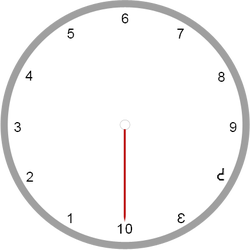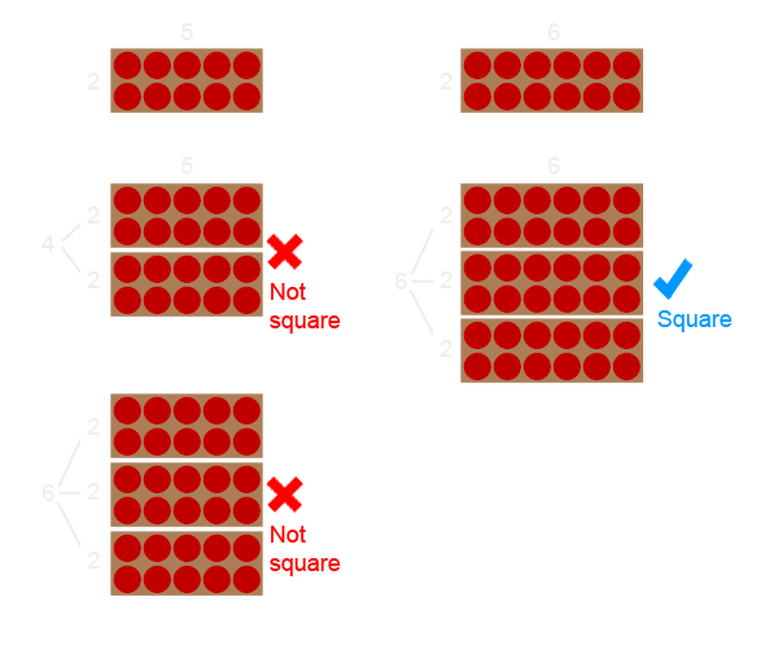(This page should be friendly to most colourblind viewers)
Dozenal forums: http://dozenal.boards.net/
No account required.
Please tell me if you are confused or how you would like to improve this site @ Dozenal > Blogs > Buffoonery's Blog within the forums (the link above).
Before you start reading, please take note of the navigation menus at the top. You can access the entire site from there.
No account required.
Please tell me if you are confused or how you would like to improve this site @ Dozenal > Blogs > Buffoonery's Blog within the forums (the link above).
Before you start reading, please take note of the navigation menus at the top. You can access the entire site from there.
Introduction to the Dozenal System

The number 12 is ubiquitous. It is the basis of time, music, and imperial measurement. In many beliefs, twelve has a symbolic meaning, usually representing completeness and perfection. When we count beyond 12, we start the "teens", thirteen, fourteen, fifteen, etc., but eleven and twelve don't follow this. A closer look shows that twelve was not chosen arbitrarily, it's a beautiful number with amazing qualities.
Based on the number 12, the dozenal system is an alternative to the decimal system. The main difference being in how the number 10 is represented. As all of us are decimal users, this means we would pronounce 10 as "ten". Yet in the dozenal system, we say 10 as a dozen or "do" for short.
Dozen literally translates to, "two (and) ten", with the "do-" part meaning two, and the "-zen" meaning ten.
In german, "zehn" means ten, and in most languages there is a variant of "do" like dos (Spanish), deux (French), duo (Latin), etc., all meaning two.
Based on the number 12, the dozenal system is an alternative to the decimal system. The main difference being in how the number 10 is represented. As all of us are decimal users, this means we would pronounce 10 as "ten". Yet in the dozenal system, we say 10 as a dozen or "do" for short.
Dozen literally translates to, "two (and) ten", with the "do-" part meaning two, and the "-zen" meaning ten.
In german, "zehn" means ten, and in most languages there is a variant of "do" like dos (Spanish), deux (French), duo (Latin), etc., all meaning two.
Here's a small taste of the dozenal system:
1, 2, 3, 4, 5, 6, 7, 8, 9, ᕍ, Ƹ, 10.
11, 12, 13, 14, 15, 16, 17, 18, 19, 1ᕍ, 1Ƹ, 20.
1, 2, 3, 4, 5, 6, 7, 8, 9, ᕍ, Ƹ, 10.
11, 12, 13, 14, 15, 16, 17, 18, 19, 1ᕍ, 1Ƹ, 20.
|
10 / 4 = 3
3 x 8 = 20 20 - 6 = 16 16 / 3 = 6 6 + 6 = 10 |
1/2 = 0;6
1/3 = 0;4 1/4 = 0;3 1/6 = 0;2 2/3 = 0;8 |
Why Fix What Isn't Broken?
Let me be clear by saying that the decimal system does not need to be abandoned, as the dozenal system can be translated back and forth. You would use the dozenal system for its quicker termination, to quicken arithmetic with fractions, and enjoy the elegance now unlocked in every day tasks. One of the biggest reasons to adopt the dozenal system is to have shorter terminating numbers and less recurring numbers.
|
Less of these:
|
Long series before termination:
1.57142857... 0.142857... 0.0232558... Recurring digits: 0.333... 0.0909... 0.454545... |
|
More of
these: |
Short termination:
3 0.4 2.6 8.3 |
To prove my point, I have provided a scenario that uses addition, multiplication, and division. For both systems I will set a simple task.
I will use base 10 and 12:
I will use base 10 and 12:
|
Decimal:
1: Third of 10. 10/3 = 3.333... 2: Quarter of 10. 10/4 = 2.5 3: Get the sum. 3.333... + 2.5 = 5.833... 4: Multiply the sum by half of 10. 5.833... * 5 = 29.166... |
Dozenal:
1: Third of 10. 10/3 = 4 2: Quarter of 10. 10/4 = 3 3: Get the sum. 4 + 3 = 7 4: Multiply the sum by half of 10. 7 * 6 = 36 |
This is one of the reasons people say quite frequently, "I don't want to do math, it's too much work."
Let’s continue with a scenario in which someone has two 2x4s. Cut one at 10 inches decimally, the other at 10 inches dozenally.
The following are all the ways up to an eighth that you can cut them:
Let’s continue with a scenario in which someone has two 2x4s. Cut one at 10 inches decimally, the other at 10 inches dozenally.
The following are all the ways up to an eighth that you can cut them:
|
10 /2 = 5"
10 /3 = 3.333..." 10 /4 = 2.5" 10 /5 = 2" 10 /6 = 1.666..." 10 /7 = 1.428..." 10 /8 = 1.25" |
10 /2 = 6"
10 /3 = 4" 10 /4 = 3" 10 /5 = 2;497..." 10 /6 = 2" 10 /7 = 1;86ᕍ..." 10 /8 = 1;6" |
I've highlighted in red the numbers that continue a long series before termination and the numbers that do not terminate (recurring). Do you see the advantage here?
My point is that having a long or non-terminating decimal forces us to use calculators, or use fractions as we do with the imperial system. We are limiting ourselves severely in mathematics when we continue these practices.
My point is that having a long or non-terminating decimal forces us to use calculators, or use fractions as we do with the imperial system. We are limiting ourselves severely in mathematics when we continue these practices.
Packaging
Many commercial goods are sold in packs of 12, why is this? Let's take a closer look:
If we have a 2 x 5 egg carton and we try to square it off by adding another box parallel to it, we end up with 4x5. Well, that's not square, so we do it once more, 6x5. Unfortunately, it's not going to work.
Let's try the best multiplication combinations to reach 10:
2 x 5 = 10 good
3 x 3 = 9 too low
3 x 4 = 12 too high
4 x 2 = 8 too low
4 x 3 = 12 too high
5 x 2 = 10 good
Now we try a typical 2x6 egg carton, trying to square it off, we add another 2 boxes and we have a perfect 6x6. Now we can store this in trucks easily, we can stack them without having a layered brick pattern. We can stack them in 3 rows of 2x6 egg cartons, easily counted from a distance too. Look at all the ways we can order them:
2 x 6 = 12 good
3 x 4 = 12 good
4 x 3 = 12 good
6 x 2 = 12 good
Let's try the best multiplication combinations to reach 10:
2 x 5 = 10 good
3 x 3 = 9 too low
3 x 4 = 12 too high
4 x 2 = 8 too low
4 x 3 = 12 too high
5 x 2 = 10 good
Now we try a typical 2x6 egg carton, trying to square it off, we add another 2 boxes and we have a perfect 6x6. Now we can store this in trucks easily, we can stack them without having a layered brick pattern. We can stack them in 3 rows of 2x6 egg cartons, easily counted from a distance too. Look at all the ways we can order them:
2 x 6 = 12 good
3 x 4 = 12 good
4 x 3 = 12 good
6 x 2 = 12 good
Our Five-Fingered Hands
Imperial vs Metric
One of the reasons the imperial system is still widely used today is simply due to the imperial system using a base of 12 for its most common measurement, which has benefits:
Termination: more terminating decimals for any operation (landing on 4.3 instead of 4.333...),
meaning you can calculate on paper, no calculator needed.
Patterns: multiplying and dividing most numbers can lead to a straight forward patterns, leading to easier memorization.
And yes, I do realize that when we divide inches up, we use sixteenths, but I'll show you the issues with that in the base comparison page.
But, the metric system has better:
Scaling: rationally scaled, 1:10 from each unit (1000mm = 1m)
Prefixes: the only changes between unit names (millimeter, kilometer)
Translation: units translate directly between each other (litres vs meters)
Where the metric system fails is its use of our decimal system. Try measuring a floor to ceiling measurement, then do a simple division test and you'll see you run into situations where you need a calculator.
What if I were to tell you the dozenal system has all of these advantages and still supports the metric system; 1000mm still equals 1m. So you can have the best of both worlds, imperial and metric in harmony.
Anyway, I hope I've encouraged you to read on. To help, I've split the rest of the blog into left and right so you can read in both mindsets of decimal and dozenal.
To read more, continue onto Counting at the top (within the introduction tab).
Termination: more terminating decimals for any operation (landing on 4.3 instead of 4.333...),
meaning you can calculate on paper, no calculator needed.
Patterns: multiplying and dividing most numbers can lead to a straight forward patterns, leading to easier memorization.
And yes, I do realize that when we divide inches up, we use sixteenths, but I'll show you the issues with that in the base comparison page.
But, the metric system has better:
Scaling: rationally scaled, 1:10 from each unit (1000mm = 1m)
Prefixes: the only changes between unit names (millimeter, kilometer)
Translation: units translate directly between each other (litres vs meters)
Where the metric system fails is its use of our decimal system. Try measuring a floor to ceiling measurement, then do a simple division test and you'll see you run into situations where you need a calculator.
What if I were to tell you the dozenal system has all of these advantages and still supports the metric system; 1000mm still equals 1m. So you can have the best of both worlds, imperial and metric in harmony.
Anyway, I hope I've encouraged you to read on. To help, I've split the rest of the blog into left and right so you can read in both mindsets of decimal and dozenal.
To read more, continue onto Counting at the top (within the introduction tab).




